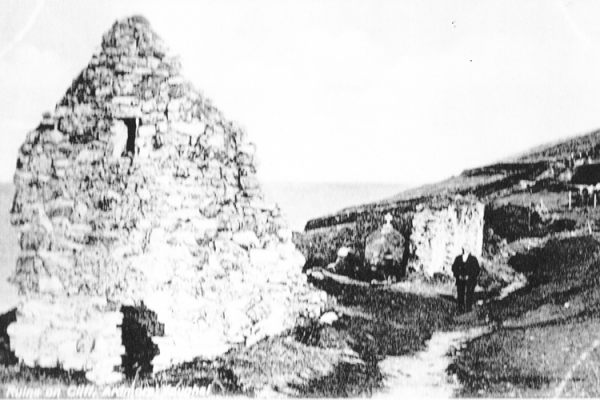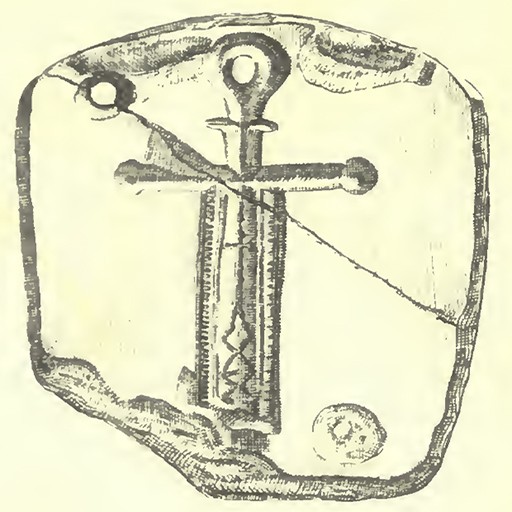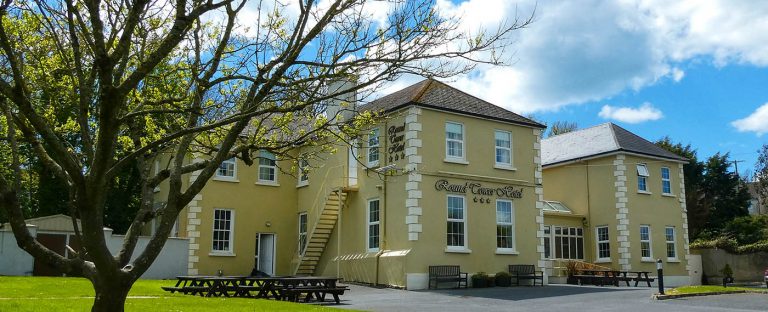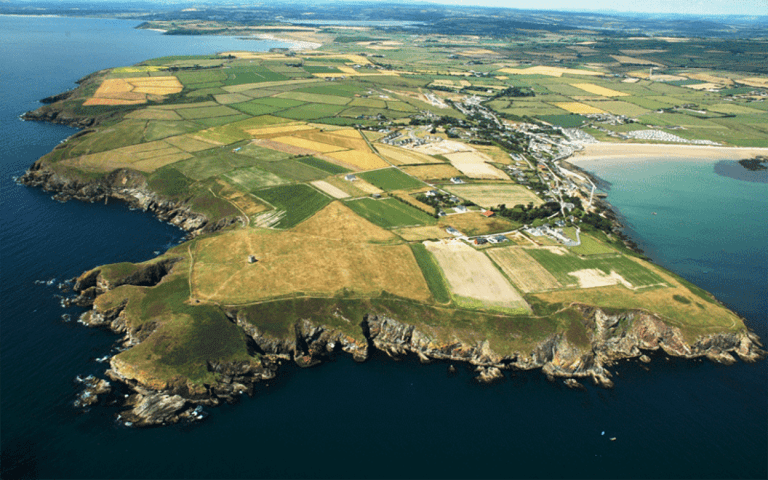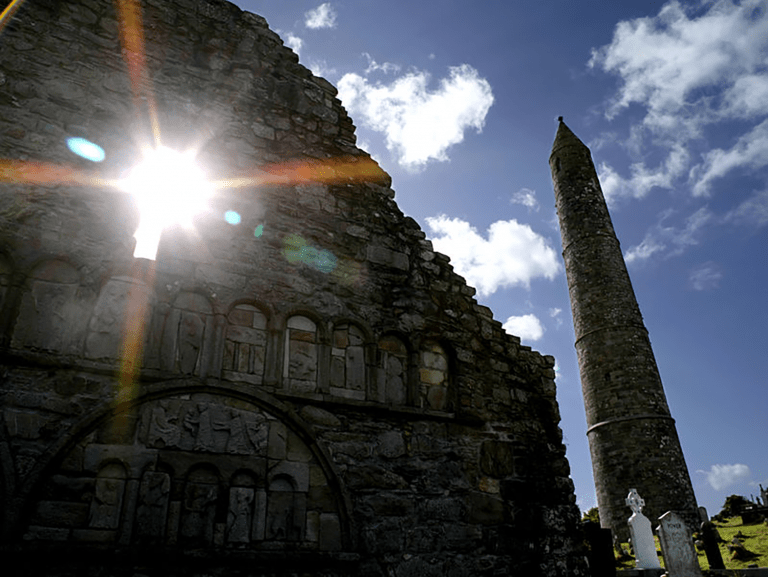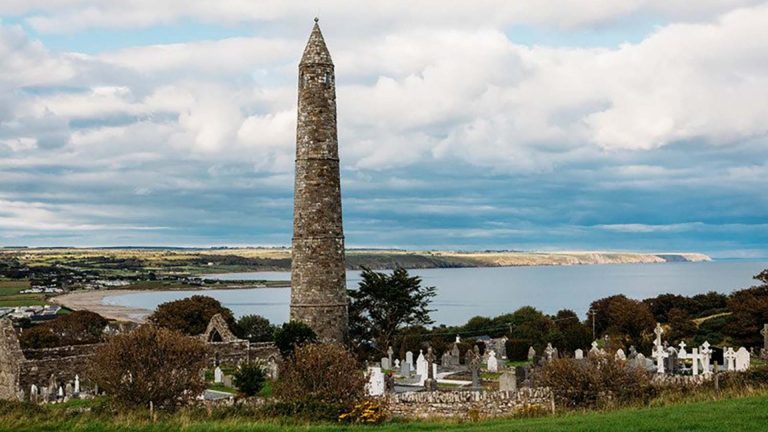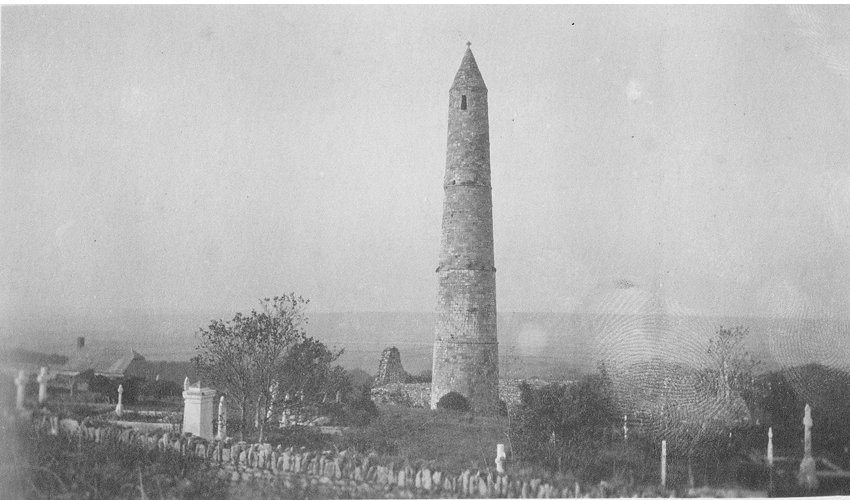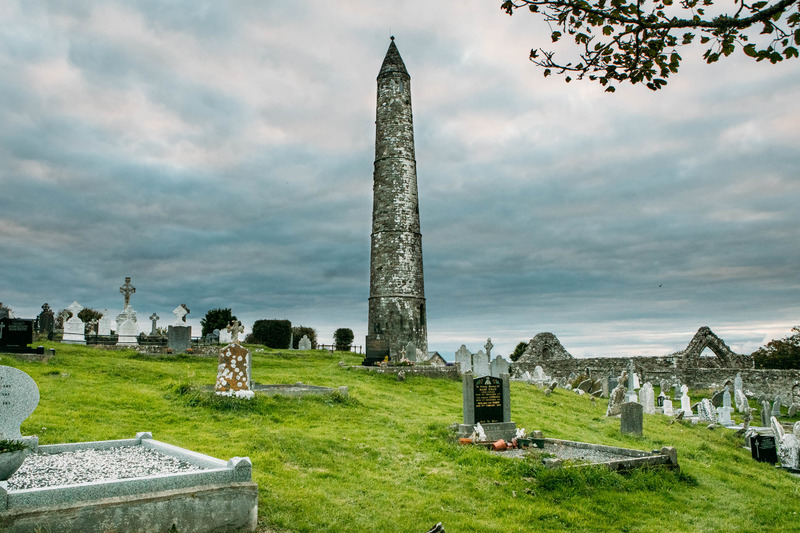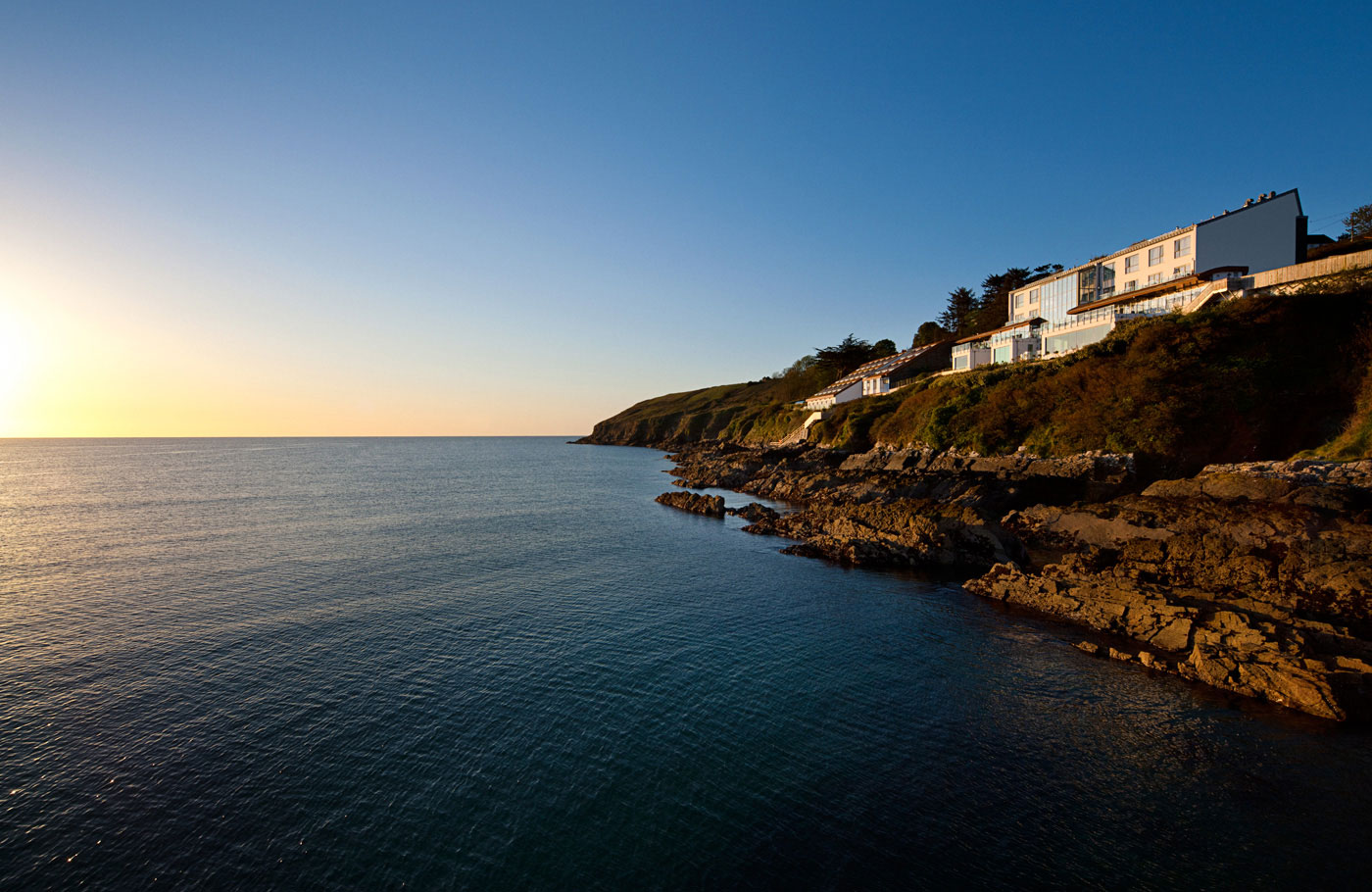Imagine stepping back to a celebration that has echoed through the centuries. Welcome to St. Declan’s Pattern Festival in Ardmore, County Waterford – a vibrant tapestry of faith, tradition, and revelry that has captivated pilgrims and merrymakers for over 400 years.
A Saint’s Legacy
The festival honors St. Declan, a pre-Patrician saint who brought Christianity to the Déise region in the 5th century. Legend has it that Declan, a prince of the local tribe, returned from Rome to establish a monastery in Ardmore around 416 AD – predating St. Patrick’s arrival by 15 years[1][3].
Ancient Roots, Enduring Traditions
The earliest recorded mention of the Pattern dates back to 1611 when a royal grant established a fair on St. Declan’s Eve or Day[2]. Over the centuries, the celebration has evolved, but its core remains unchanged – a blend of devotion and festivity that draws thousands to this picturesque coastal village.
Sacred Sites and Rituals
The Pattern centers around key locations steeped in history:
- St. Declan’s Well: Pilgrims perform ’rounds,’ circling the well and nearby ruined church three times clockwise[5].
- St. Declan’s Stone: A large rock on the beach, said to have miraculously carried the saint’s bell across the sea. Devotees attempt to crawl under it for good fortune[7].
- The Oratory: Believed to be St. Declan’s burial site, it’s a focal point for prayers and offerings[6].
From Piety to Revelry
Historically, the Pattern was as much about celebration as devotion:
- The beach would be lined with tents hosting musicians and drink sellers[6].
- Dancing platforms in local yards provided entertainment[4].
- Faction fights between rival groups were once a common, if controversial, feature[6].
A Modern Revival
While past excesses have been tempered, the spirit of the Pattern lives on. Today’s festival, typically held around July 24th, offers a rich tapestry of events:
- Religious ceremonies and pilgrimages
- Historical reenactments, including a pageant of St. Declan’s arrival
- Music, dance, and cultural performances
- Family-friendly activities and local crafts[1][5]
As you wander through Ardmore during the Pattern, you’re not just attending a festival – you’re participating in a living piece of Irish history. St. Declan’s Pattern Festival offers a unique glimpse into Ireland’s spiritual and cultural heritage, inviting all to be part of its continuing story, from the mist-shrouded cliffs to the lively village streets.
Citations:
[1] https://entertainment.ie/event-news/ardmore-pattern-festival-173503/
[2] https://www.waterfordmuseum.ie/exhibit/web/Display/article/331/7/The_Ardmore_Journal_St_Declans_Pattern_.html
[3] https://www.ardmorewaterford.com/st-declans-well-ardmore/
[4] https://www.waterfordmuseum.ie/exhibit/web/Display/article/372/6/Ardmore_Memory_and_Story__Traditions_The_Pattern.html
[5] https://insearchofholywellsandhealingsprings.wordpress.com/2012/09/19/ardmores-st-declans-well-and-its-pattern-day-note-ill-add-more-photos-tomorrow-ipad-being-a-pain/
[6] https://irishfolklore.wordpress.com/2017/07/24/saint-declans-pattern-day/
[7] http://stdeclansns.com/stdnsarchive/stdeclan.htm
Bloody Heads From Fighting Were Not Uncommon In Ardmore
Ardmore is just waiting to be explored.
It provides a remote getaway. A base for action-packed adventures on the water. And every other sort of escape that you could desire in between.
And, like any visitor, you may keep a diary of your experience.
But, we are confident that you’ll never experience what one visitor did in 1911.
It’s a wonderful cautionary tale of excess.
Enjoy this melancholy scene from the notebook of a gentleman of high attainments and undoubted veracity.
“22nd July. Arrived this evening at Ardmore, preparations already making for the due celebration of the Patron’s day; visited the dormitory of St. Declan; an old meagre figure had possession of the grave, in which she ate, drank, and slept, that none other might claim a right to it; one half of her only appeared above ground; the last supply of earth for the approaching demand had just been put in; she recommended us strongly to take a portion in the name of God and the blessed Saint (on pronouncing the latter name she with due reverence dropped a low curtsey), as a preventive against fire, drowning, etc, etc., if eaten with due faith.
23rd. Barrels of porter and whiskey arriving by sea and land in numbers, already three hundred have landed, and every avenue teems with figures moving along to pay their devotions. 10 o’clock.
Commenced my rounds, though the 24th is the Patron’s day; walked down to the seashore, where a few yards below high water mark is the far-famed stone that in the fourth century (before the arrival of Saint Patrick) came floating over from Rome at the prayer of St. Declan, with a bell upon it for the edification of the Irish. On our way, we passed through assembled multitudes pitching tents, fastening up carts and cars as dwellings, arranging their goods, and now and then fighting, without which Paddy cannot live long in good humour; passed on, here the first scene began, and I counted 154 persons kneeling round the stone, fresh comers every moment succeeding those who had told their beads and said their prayers. I watched their motions as they approached the stone; they took off their hats, then lowly bowed their heads, and dropped their knees on the pointed rocks; here they repeated several prayers, telling over their beads; then solemnly drew near and reverentially kissed the unformed mass several times, then bumped their backs against it three times, drew back in awe, dropped again on their knees repeating more prayers, and silently retired; children in arms were pressed down till their little mouths touched the holy stone.
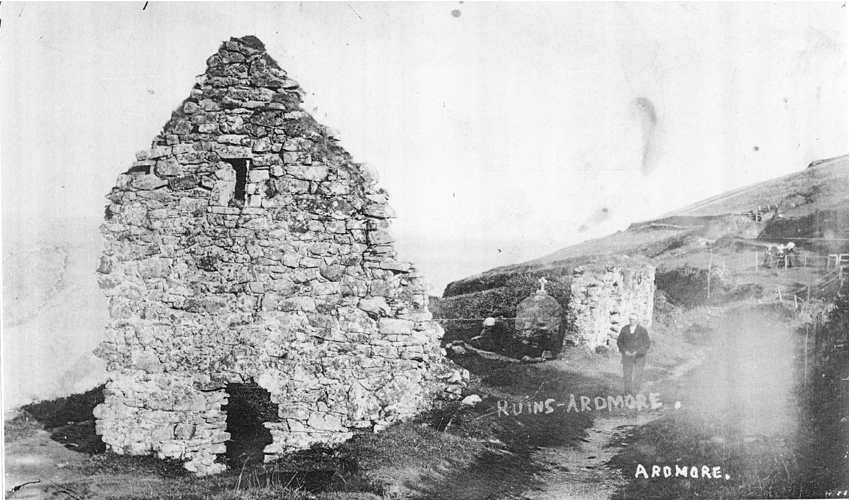
The crowd then formed a long line winding up the narrow path that leads along the mountain’s brow to St. Declan’s chapel; here, too, I went: the scenery was beautiful as we looked over the precipitous cliffs across the bay of Ardmore. On the brink stand the remnants of a chapel, said to be the first built in Ireland. On entering the gateway, on your right hand, is the well St. Declan blessed; a narrow doorway leads to it, a formidable figure had possession of it, and dealt out in pint mugs to those who paid; some drank it, some poured it on their limbs, their head, their backs, in the most devout manner; some claimed a second portion to bottle and carry home to sick relatives, or to preserve their houses from fire; they then knelt down to the well, and said their prayers; after which, devoutly turning round, they repeated their prayers to a little mount, under which had been the east window, crept on their knees to it, kissed it, said more prayers, crossed themselves, and walked on; here the crowd of mendicants was great, and the miserable objects of deformity more lamentable than I had ever seen, and too disgusting to detail; the crowd now wound higher up the hill, inclined back again, and proceeded to the grave, here they knelt again in the most abject posture, saying prayers, and waiting for their turn to be admitted into the little dormitory, where the old hag distributed the earth, and gave lectures on its efficacy, as preventing drowning, burning, etc.
A few yards brought us to the far-famed round tower, the most perfect in Ireland; here again, the devout pilgrims repeated prayers and told their beads, and knelt with the utmost humility, kissed the tower, broke off pieces, which they carried away; then the whole crowd filed off to the chapel, which was open to receive them, and mass was celebrated in all due form; here the devotions of the day ended; at twenty different periods I counted the people as they passed; they averaged fifty-five a minute, which gives a total of 12 or 15,000 persons; these numbers accorded with other calculations.
The tents, sixty-four in number, are now complete, eating, drinking, dancing, occupy the multitude. One figure is walking about with a boiled leg of mutton and salt in one hand, a big knife in the other, vociferating ‘a cut for a penny! ‘a cut for a penny!’ here cheese and fish are selling; some tents contain gaming-tables, but the great body of persons are going round as on yesterday; they are more numerous, a few force themselves under the stone, praying as they crawl with difficulty.
Seven o’clock: All now appears confusion, every man is drunk, and every woman is holding a man back from the deadly combat; bloody knees from devotion and bloody heads from fighting are not uncommon.
Eight o’clock: Three cabins are now blazing furiously, not a vestige can be saved; such a scene fighting, pulling; drinking whiskey, holy-water; crying, cursing I have never seen.
Nine o’clock: Fire nearly subdued for want of fuel; here comes the old Jezebel from the grave, covered with earth, half-naked, and yellow as the clay of which she bears a portion, and is strewing it in places the fire cannot reach, to show its virtue in destroying that devouring element.
25th Tents nearly struck; a few of the most devout remain to complete their devotions.
Seven o’clock All is still again, and Ardmore is again a mere secluded village.
Taken From Ireland: its scenery, character, and history, by Mr. & Mrs. S. C. Hall, illustrated from paintings by F. S. Walker and photographs (1911).
